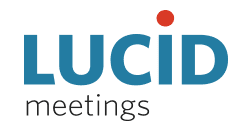Business Productivity Software is a pivotal investment for an organisation looking to improve operational efficiency, streamline tasks and drive business growth. It aids in organizing, coordinating, and managing daily business activities, which in turn maximizes productivity and saves valuable time. This type of software boasts versatile features such as task management, project management, scheduling, and communication tools, all integrated into a single platform. Additionally, it offers analytical capabilities to track performance and generate insightful data, promoting informed decision making. Essentially, a Business Productivity Software allows companies to perform optimally, reduce human error, and achieve their business objectives more effectively.
Business Productivity Software: Our Recommendations
Pick #1: Our Software
ZipDo
ZipDo, an innovative cloud-hosted meeting notes application, redefines team synergy by radically altering the process by which meeting notes are recorded, deployed, and exchanged. With its instantaneous note-taking, synergistic editing, and synchronizing with well-liked calendars and productivity aids, it’s an essential tool for all types of workgroups.
One of the notable features of ZipDo is its live note-taking system that allows every team member to stay aligned throughout the meeting, abolishing the archaic method of passing notes manually. As the conference concludes, participants can conveniently modify and augment the notes, keeping everyone informed with up-to-the-minute details.
ZipDo exceeds expectations in terms of note structuring, granting straightforward classification into various channels or folders. With its searchable notes feature, you can quickly retrieve specifics without needing to incessantly scroll or conduct a time-consuming manual search.
Another key feature is ZipDo’s granular access control for note sharing, providing a secure environment for knowledge exchange with colleagues, clientele, or associates. Calendar integrations further smoothen collaboration by automating note generation for each meeting, thus ridding the need for manual input.
In essence, ZipDo is an approachable platform furnishing a suite of proficient features that heighten team performance, cooperation, and project management. Its live note-taking, collective editing, organized structure, searchable notes, secure sharing and calendar integrations together make this software indispensable, simplifying meeting coordination, thereby ensuring swift and smooth project progression.
Pick #2
fellow.app

Fellow.app is a business productivity software that functions as a collaborative digital meeting space. It helps teams align on tasks, create agendas, take meeting minutes, and track actionable items. The platform facilitates effective communication by scheduling and organizing meetings, assigning tasks, setting goals, and providing a space for individuals to share their thoughts and reflections before meetings. By streamlining these processes, Fellow.app boosts productivity and ensures everyone in the team is on the same page to drive effective outcomes.
Pick #3
adam.ai

adam.ai is a business productivity software designed to streamline meeting management processes for various organizations. It serves as an advanced meeting management and collaboration platform, providing functionalities like scheduling, preparation, decision-making, and actionable insights based on data gathered from meetings. It assists users in setting up different meeting agendas, tracking meeting minutes, sharing meeting content, and fulfilling decisions made during meetings. Its centralization of meeting info, tasks, and decisions makes it a reliable tool for improving productivity and efficiency within business organizations.
Pick #4
Meeting Decisions

Meeting Decisions is a Business Productivity Software designed to improve meeting efficacy and streamline decision-making processes in corporate environments. The platform empowers users to orchestrate structured meetings by enabling them to prepare agendas, share and discuss in-meeting materials, and assign action items in real-time. By consolidating all necessary data into a centralized location, this software enhances collaboration and promotes accountability, facilitating a seamless transition from meeting discussions to actionable outcomes. Meeting Decisions integrates with popular communication tools such as Microsoft Teams and SharePoint, delivering a comprehensive solution to optimize business productivity.
Pick #5
Hypercontext

Hypercontext.com is a comprehensive business productivity software designed to streamline communication, collaboration, and goal alignment within team-based work environments. The software offers tools such as shared meeting agendas, actionable meeting insights, collaborative note-taking, and goal setting functionalities. By making these aspects of teamwork more efficient and transparent, Hypercontext.com facilitates enhanced productivity and aids in fostering a more engaged and accountable workspace. The software is particularly useful in remote or hybrid work settings, where effective digital communication is crucial for maintaining team cohesion and productivity.
Pick #6
Lucid Meetings

Lucid Meetings is a comprehensive business productivity software designed to facilitate more effective meetings within an organization. It offers a platform to schedule and conduct meetings, assign tasks, manage agendas, and keep track of minutes, all of which contribute to increased efficiency and productivity for teams. This software also includes features enabling interactive discussion and team collaboration, such as the capability to share documents and files, vote on decisions, and screen-sharing for presentations. Furthermore, Lucid Meetings integrates with other productivity tools, making it a versatile solution for organizations.
Pick #7
Beenote

Beenote.io is a comprehensive business productivity software that helps organizations manage meetings more effectively from the start to the end. It serves as a centralized platform for creating agendas, assigning tasks, and scheduling meetings, thus ensuring that every professional meeting is productive and meaningful. It provides users with efficient tools to record minutes during the meeting directly, track follow-ups, and foster collaboration across the team. Additionally, this platform is GDPR and CCPA compliant, ensuring the privacy and security of organizational data.
Pick #8
MeetingBooster

meetingbooster.com is a business productivity software specifically designed to streamline and improve meeting processes. It provides tools for creating detailed meeting agendas, distributing them among participants, assigning tasks, and tracking the progress of these tasks. Its comprehensive minutes functionality enables quick recording of meeting details, decisions, and action items, improving accountability and follow-up. Additionally, it supports decision-making with voting features, and its analytics module enables managers to assess meeting effectiveness. MeetingBooster, thus, serves as a collaborative platform that enhances team productivity by ensuring that meetings are efficient, well-documented, and outcome-oriented.
Pick #9
MeetingKing

meetingking.com is a Business Productivity Software designed to streamline and enhance the effectiveness of professional meetings. It provides tools and features that manage all aspects of meetings, from scheduling appointments to creating structured agendas, accurate minutes, and organizers of tasks thereafter. This cloud-based tool also facilitates collaboration and communication, providing a dedicated space for pre-meeting discussions and post-meeting follow-ups. By automating many of these processes, MeetingKing empowers organizations to conduct more productive meetings, save valuable time, and keep everyone aligned with the business objectives.
Pick #10
Magic Minutes

magicminutes.co.uk is an innovative business productivity software that streamlines the process of conducting, managing, and documenting business meetings. This online application enables users to create agendas, assign actions, monitor deadlines, and automatically generate minutes. It’s designed to save time and drive efficiency across varied business environments by improving communication, collaboration, and accountability among team members. The software fosters a more focused, productive, and balanced approach to organisational meetings, contributing to better decision-making and overall business performance.
Pick #11
apollo.ai

Apollo.ai is a robust business productivity software that aids businesses in enhancing their sales and growth by effectively managing their sales teams, client relationships, and optimizing their lead generation. It is characterized by its data intelligence features, which utilizes artificial intelligence to optimize customer data, enhance sales engagement, and offer smart analytics. With its built-in capabilities, it supports all aspects of the sales process from prospecting to customer relationship management, helping businesses to automate their workflow, intelligently engage with their customers, and consequently, achieve their sales goals.
Business Productivity Software: Key Features
Business productivity software is designed to facilitate complex business operations and streamline workflow processes, optimizing the overall efficiency of any organization. Its key features include task management capabilities that allow for the assigning, tracking, and updating of tasks, ensuring that projects progress smoothly and deadlines are met. This type of software often integrates seamlessly with email and calendar systems, enabling effective scheduling and communication within teams. Additionally, it often incorporates document sharing and collaboration tools, allowing multiple team members to concurrently work on and edit documents, thereby enhancing team collaboration and reducing the time spent on project development.
Another fundamental aspect of business productivity software is its ability to generate detailed reports and analytics. This functionality provides invaluable insights into business performance, highlighting areas of strength and pinpointing opportunities for improvement. Real-time data analysis aids in informed decision-making, helping businesses to adapt to market changes swiftly. Furthermore, customization features are typically available, enabling the software to be tailored to the specific needs and workflows of a business. Security features also play a crucial role, protecting sensitive information from unauthorized access and potential cyber threats, thus ensuring the intestinal integrity and confidentiality of business data.
Buying Criteria
In the fast-paced world of business, choosing the right productivity software can be a game-changer. Start by assessing your business needs and objectives. Identify the specific tasks that you want to streamline or automate, and consider the scale at which you’re operating. Are you managing a small team or running operations at a larger scale? Different software solutions cater to different business sizes and types, so understanding your requirements is key. Additionally, think about the kind of collaboration features, scalability, and integration capabilities you might need. These factors will help narrow down your options to those that truly align with your business goals.
Furthermore, take a critical look at user experience and support services offered by the software. A tool might be powerful, but if it’s not user-friendly, your team might struggle to adopt it, leading to reduced productivity. Reading reviews and testimonials can provide insight into user satisfaction and potential issues. Lastly, consider the software’s cost against your budget. While it’s tempting to opt for a solution with numerous features, weigh if you’re likely to use them against the total cost. Opt for a solution that offers the best value for your money, considering both current and future business needs.
Benefits
Investing in business productivity software makes sense when a company is looking to streamline operations, enhance communication, and improve efficiency across various departments. Businesses experiencing rapid growth or those facing challenges in managing tasks, teams, and projects can greatly benefit from implementing such software. It aids in automating routine tasks, fostering collaboration among team members, and providing real-time insights into performance metrics. This investment is particularly prudent for organizations seeking to scale operations smoothly and maintain a competitive edge in their industry by optimizing workflows and boosting overall productivity.
On the other hand, investing in a business productivity software may not be a wise decision for startups or small businesses with limited operations and a tight budget. When the scale of operations is manageable without the aid of sophisticated tools, or when the cost of such software outweighs the potential benefits, it might be more practical to delay the purchase. Likewise, companies with a highly specialized workflow that wouldn’t significantly benefit from generalized productivity solutions, or those that can achieve similar efficiencies through low-cost or no-cost alternatives, might find that the investment does not yield a justifiable return, making it sensible to forego it.
Popular Questions
Business Productivity Software is a set of tools or applications that enable organizations to enhance their operations and improve their overall productivity. This type of software can include applications for project management, time tracking, document creation, data analysis, and communication among others.
Some examples of business productivity software include Microsoft Office Suite (Excel, Word, PowerPoint), Google Workspace (Docs, Sheets, Slides), project management tools (Asana, Trello), communication software (Slack, Microsoft Teams), and data visualization tools (Tableau).
Business Productivity Software can increase efficiency and improve workflows. This type of software enables businesses to automate processes, reduce the risk of errors, manage projects effectively, enhance communication, and make data-driven decisions. It not only saves time but also helps in better resource utilization.
Choosing the right Business Productivity Software depends on the specific needs and goals of your business. Consider factors such as ease of use, scalability, collaboration features, integration with other systems, customer support, and pricing. Also, make sure to read reviews and try out free trials if available before making a final decision.
While Business Productivity Software offers numerous benefits, it can also have potential downsides. These can include the time and cost involved in training employees to use the software, potential difficulties with integrating the software with other systems, and the ongoing costs of licenses or subscriptions. Dependence on such software can also be a risk if any technical issues arise, causing a halt in business operations.


